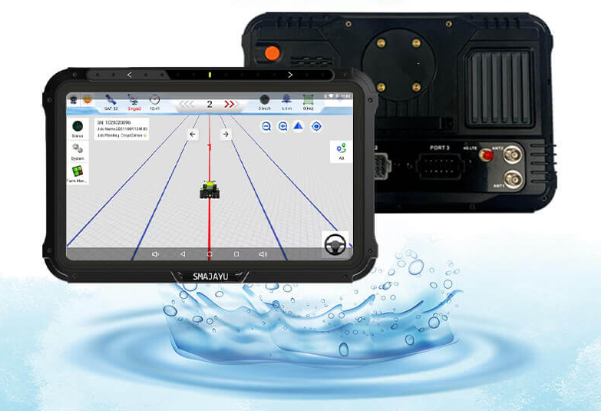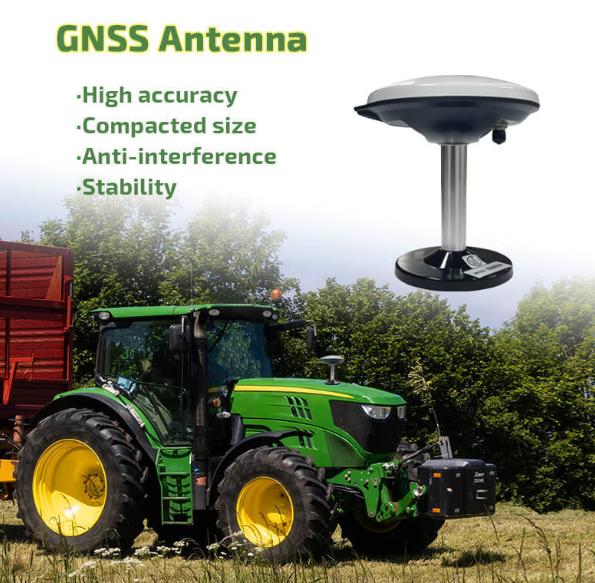Unlock the potential of GPS technology in farming with strategies to address connectivity issues and safeguard data privacy. Explore how GPS systems drive efficiency, cost savings, and environmental sustainability.
Introduction to Farming GPS Systems
1. Traditional Farming Methods and Challenges
Traditional farming methods have long been the backbone of agriculture, relying heavily on manual labor and subjective decision-making processes. Farmers often face challenges such as inconsistent yields, excessive input usage, and difficulties in monitoring crop health and growth. These challenges not only hindered efficiency but also posed significant financial and environmental risks.
2. GPS Technology in Agriculture
The advent of GPS technology has brought about a revolutionary transformation in the agricultural sector. GPS, or Global Positioning System, utilizes satellite signals to pinpoint locations with remarkable accuracy. Initially developed for military purposes, GPS has found widespread application in various civilian domains, including agriculture. Its integration with farming practices has paved the way for precision agriculture, optimizing resource usage and enhancing productivity.
3. Importance of Precision Agriculture
Precision agriculture, enabled by GPS systems, marks a paradigm shift in farming practices. It involves the precise management of resources such as seeds, fertilizers, and pesticides, tailored to the specific needs of individual plants or sections of fields. By precisely targeting inputs, farmers can achieve higher yields while minimizing environmental impact. This approach not only boosts efficiency but also ensures the sustainability of agricultural operations for future generations.
4. Preview of Topics
In subsequent posts, we will delve deeper into the benefits of implementing GPS systems in farming, exploring how they enhance efficiency, reduce costs, promote environmental sustainability, and facilitate informed decision-making. Additionally, we will examine various types of farming GPS systems, including guidance systems, variable rate technology (VRT), remote sensing, and data management platforms.
Benefits of Implementing GPS Systems in Farming
1. Increased Efficiency
GPS systems play a pivotal role in optimizing farm operations, leading to significant improvements in efficiency. By providing precise positioning information, GPS-guided tractors and machinery can operate with utmost accuracy, minimizing overlaps and gaps during planting, spraying, and harvesting activities. This precision not only saves time but also conserves resources, ultimately enhancing overall farm productivity.
2. Cost Savings
One of the most compelling benefits of precision agriculture is its ability to generate substantial cost savings for farmers. By leveraging GPS technology to precisely apply inputs such as seeds, fertilizers, and pesticides, farmers can minimize wastage and achieve optimal resource utilization. This targeted approach not only reduces input costs but also enhances the economic viability of farming operations.

3. Environmental Sustainability
GPS technology plays a crucial role in promoting environmental sustainability within the agricultural sector. By enabling farmers to apply inputs with precision, GPS systems help minimize the use of agrochemicals, thereby reducing the risk of soil and water contamination. Moreover, by optimizing resource usage, precision agriculture contributes to the conservation of natural resources and biodiversity, fostering a more sustainable farming ecosystem.
4. Improved Decision-Making
Real-time data provided by GPS systems empowers farmers to make informed decisions throughout the crop production cycle. By monitoring factors such as soil moisture levels, crop health, and weather conditions, farmers can adapt their management practices accordingly, optimizing yields and mitigating risks. Additionally, data analytics tools integrated with GPS technology enable farmers to analyze historical data and identify trends, further enhancing decision-making capabilities.
Types of Farming GPS Systems
1. Guidance Systems
GPS-guided tractors and machinery are equipped with guidance systems that enable precise navigation within fields. These systems utilize GPS technology to provide accurate positioning information, allowing farmers to perform tasks such as planting, spraying, and harvesting with minimal overlap and maximum efficiency. By eliminating guesswork and manual corrections, guidance systems streamline farm operations and enhance overall productivity.
2. Variable Rate Technology (VRT)
Variable rate technology (VRT) leverages GPS data to optimize input application based on soil variability within fields. By precisely tailoring inputs such as fertilizers and pesticides to the specific needs of individual areas, farmers can maximize crop yields while minimizing input costs and environmental impact. VRT systems automatically adjust application rates in real-time, ensuring optimal resource utilization and uniform crop growth across the field.
3. Remote Sensing
Satellite and drone imagery integrated with GPS technology provide valuable insights for crop monitoring and management. Remote sensing platforms capture high-resolution images of fields, allowing farmers to assess crop health, detect pest infestations, and identify areas of stress or nutrient deficiency. By analyzing these images alongside GPS data, farmers can make data-driven decisions regarding irrigation, fertilization, and pest control, ultimately optimizing crop performance and maximizing yields.
4. Data Management Platforms
Effective management and analysis of data collected from GPS systems are essential for maximizing the benefits of precision agriculture. Data management platforms facilitate the collection, storage, analysis, and visualization of GPS data, enabling farmers to gain valuable insights into field performance and crop variability. These platforms provide tools for generating maps, creating prescription maps for input application, and monitoring crop progress over time, empowering farmers to make informed decisions and optimize farm management practices.
Overcoming Challenges in Implementing Farming GPS Systems
1. Financial Barrier of Adopting GPS Technology
Implementing farming GPS systems often involves significant initial investment costs, which can be a barrier for many farmers. To overcome this challenge, farmers can explore various strategies, such as leasing options or seeking financial assistance through government grants or agricultural subsidies. Additionally, partnering with neighboring farms to share the cost of GPS equipment and infrastructure can help reduce individual financial burdens and make adoption more feasible.

2. Technical Expertise and Support
Effective utilization of GPS systems requires technical expertise and ongoing support. Farmers can access training programs offered by GPS technology suppliers like SMAJAYU to enhance their understanding of system operation and data interpretation. Additionally, leveraging online resources, attending workshops, and networking with other farmers who have successfully implemented GPS technology can provide valuable insights and support.
3. Addressing Connectivity Issues
Connectivity issues, such as poor internet or cellular coverage in rural areas, can hinder the functionality of GPS systems. Farmers can explore alternative communication technologies, such as satellite-based internet or radio frequency communication, to ensure reliable connectivity. Additionally, implementing offline data storage and synchronization capabilities within GPS systems can mitigate the impact of connectivity disruptions and ensure uninterrupted operation.
4. Safeguarding Data Security and Privacy
The collection of sensitive farm data by GPS systems raises concerns about data security and privacy. Farmers can implement measures to safeguard their data, such as encryption, access controls, and regular data backups. Choosing reputable GPS technology suppliers like SMAJAYU, who prioritize data security and compliance with industry regulations, can provide reassurance and peace of mind to farmers regarding the protection of their valuable information.
Future Trends in Farming GPS Systems
1. Emerging Technologies
The future of farming GPS systems holds exciting possibilities with the emergence of technologies such as autonomous vehicles, AI-driven decision support systems, and blockchain integration. Autonomous vehicles equipped with GPS technology promise to revolutionize farm operations by enabling fully automated planting, spraying, and harvesting activities. AI-driven decision support systems will leverage GPS data and advanced analytics to provide real-time insights and recommendations for optimal farm management. Blockchain integration will enhance transparency and traceability within the agricultural supply chain, ensuring the integrity and authenticity of farm data.
2. Integration with IoT and Big Data Analytics
The integration of GPS data with other sources, such as IoT sensors and big data analytics platforms, will further enhance farm management practices. IoT sensors deployed throughout the farm will collect real-time data on soil moisture, weather conditions, and crop health, which can be integrated with GPS data to provide comprehensive insights for decision-making. Big data analytics platforms will analyze large volumes of farm data to identify patterns, trends, and opportunities for optimization, driving continuous improvement and innovation in precision agriculture.
3. Challenges and Opportunities for Innovation
While the future adoption and evolution of GPS technology in agriculture hold immense potential, they also present challenges and opportunities for innovation. Challenges such as data interoperability, standardization, and regulatory compliance will need to be addressed to ensure seamless integration and compatibility across different systems and platforms. However, these challenges also present opportunities for collaboration and innovation within the agricultural technology ecosystem, driving advancements in precision agriculture and sustainable food production.
Conclusion
In conclusion, farming GPS systems, such as those provided by SMAJAYU, are revolutionizing the agricultural industry by enhancing efficiency, reducing costs, promoting environmental sustainability, and facilitating informed decision-making. In subsequent posts, we will explore each of these benefits in greater detail, providing insights into the transformative impact of GPS technology on modern farming practices.


